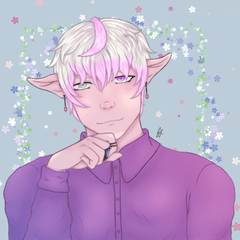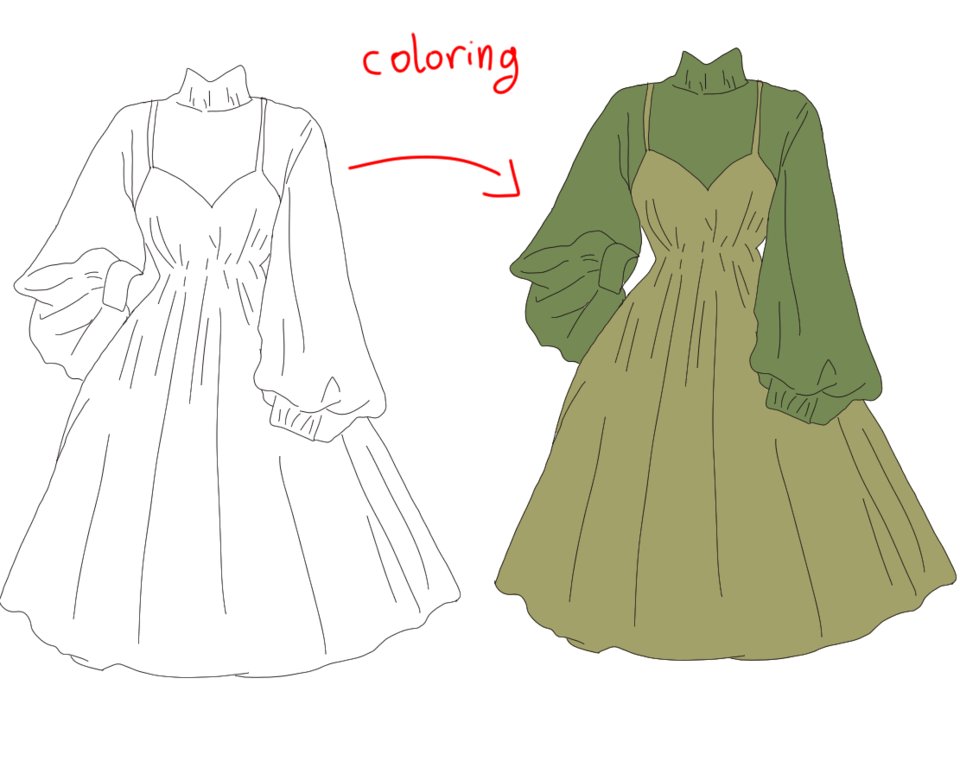Character outfit: the basics
Introduction
Hello, welcome to my first tutorial!! I hope it will be useful to you!
Things to consider when creating a character outfit
There are mainly 4 questions that you have to think about before starting to design the outfit for your character.
Their personality
Are they usually well dressed or do they prefer practicality over all?
Think about at least 3 adjectives that describe your character and make sure the design reflects those characteristics.
Example: my character conform to his 21st century western business casual fashion, usually, but they have a love for victorian fashion and will often wear clothes that resemble the ones of that historic period.
What time period, location and setting are they in?
Do they conform to their settings?
Are they forced by their circumstances to dress in a certain way?
Example: my character conform to his 21st century western business casual fashion, usually, but they have a love for victorian fashion and will often wear clothes that resemble the ones of that historic period.
Their preferences
Do they like a specific style?
Do they like to enhance certain part of their body? Or hide other ones?
What kind of proportions and colours do they like?
Example: my character doesn’t like to show his body, so he’s often very covered. He also hates attention but he’s quite tall so he doesn’t try to enhance that by wearing heels. He really likes yellow and blue and purple and prefers his clothes to be fit to him (opposed to baggy, for example)
Your Medium
What is your main medium of your project?
Is it a concept for a game, which kind? A general illustration? An animation? A comic?
The answer to this question will vary the amount of details I suggest you include in your design.
Example: drawing a comic means you have to draw the character over and over, having many details is not suited for this, same as traditional animation, while an illustration can have as many details as you want.
Start to design!
I suggest that you look up references following the ideas you came up with for the first three questions. Save as many references as you can and find which ones fit your character the most.
Here's some things to pay attention to.
Proportions and shapes
Once you have the pieces of clothing that fit your character best, start from there to create cool proportions.
As for my character, a loose light shirt is a must, so the upper part of the body will be more evident. I think, since he doesn’t like to bring attention to himself, he would wear a turtleneck under it, while keeping the shirt flowing and creating a square-ish but curved shape.
As for the pants, dark straight pants would work. He would wear the shirt inside the pants. Formal shoes to finish.
But... in some cases, this is boring. This would work if you only want to dress your character, not to make them recognisable. To make them recognisable you have to exaggerate!
A good trick is to use the silhouette, fill your character design with one color and then exaggerate some characteristics and proportions of theirs.
Textures and details
To make any outfit less boring you can also add… Details!!
This is where your creativity comes in: add accessories like jewellery or hats or anything that comes to mind!
I added a necklace, a glasses chain, some rings and gloves.
Another thing you can do is adding sewing lines, I love to add them because it also helps with perspective and makes the clothes feel less „empty“.
Remember that rarely people dress with plain clothes, even people who don’t consider fashion a priority: a lot of clothes (but objects in general) have character! T-shirts have graphics, pants have a shape, rings have patterns or a jewel, some sunglasses have weird shapes, sometimes some things get ruined but are worn anyway. Be creative with this!
Colour symbolism
You can use colours to add personality to your character, by using color symbolism!
Keep in mind that certain colours have different meanings to different cultures, but you can still use the relationships between colours to create meaning.
Example: warm colours make us feel passion, conflict, energy.
Two characters that are associated with two complementary colours could be considered enemies or rivals.
If your character feels isolated in their society, maybe you could use very bright colours for your character and greyish, desaturated colours for the other people that surround them, or the opposite, depending on the situation.
I decided to use purple, to indicate mystery, a blue-ish black, an analogous color to the purple, white, to mitigate the dark colours, and gold, both as an accent color and a complementary, who also indicates importance.
Added some color correction filters because that's my style!
That's it! I hope this was somewhat helpful and wasn't too boring to read, have fun dressing up your characters!!
























Comment